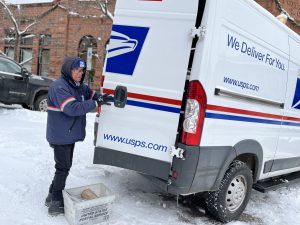Celestial event not seen since 1226 happening this month on the Winter Solstice
On Dec. 21, Jupiter and Saturn may actually appear as one especially bright star rather than two, which may explain the “Christmas star” in the Bible
The Denver Post

Something unseen on Earth for nearly eight centuries is unfolding right before our eyes in the night sky, with the main event set to occur in two weeks, on the Winter Solstice.
The two largest planets in our solar system, Jupiter and Saturn, already can be seen cozying up to each other in the southwestern sky shortly after sunset, appearing closer every night. That will continue until Dec. 21, when they will appear closer together from the perspective of Earth than at any time since 1226.
Because this one will occur at night, it will be the best observable conjunction since the one in 1226, according to John Keller, a planetary scientist and director of the Fiske Planetarium at the University of Colorado in Boulder.
Conjunctions of Jupiter and Saturn occur every 20 years or so, but not like this.
“What’s really special about this passing of Jupiter by Saturn is how close they are going to come — close enough that you’ll be able to see both of them in a telescope (together),” Keller said. “Anybody who has a telescope should definitely put their eyepieces on. They’ll see Jupiter with its four moons right next to Saturn with its rings. It should be pretty spectacular. Even with binoculars — you can actually see Jupiter’s four big moons with a good pair of binoculars. It’s hard to see (Saturn’s) rings, but you’ll see Jupiter, four little dots — which are the moons — and Saturn right next to each other.”
Click here to read the full story from The Denver Post.









